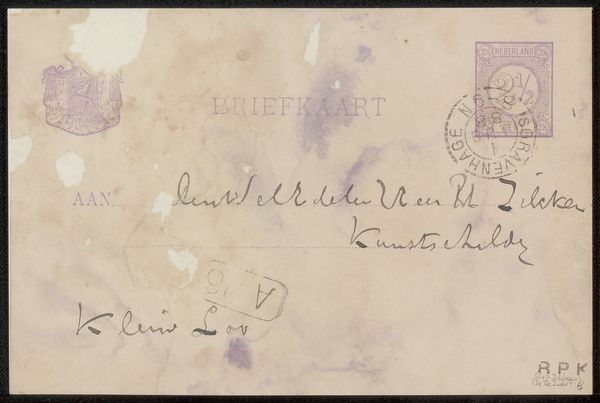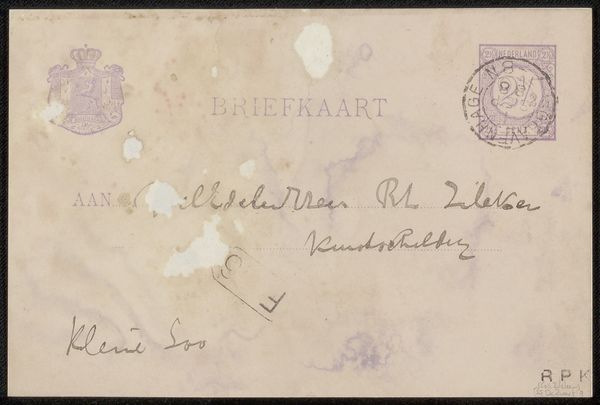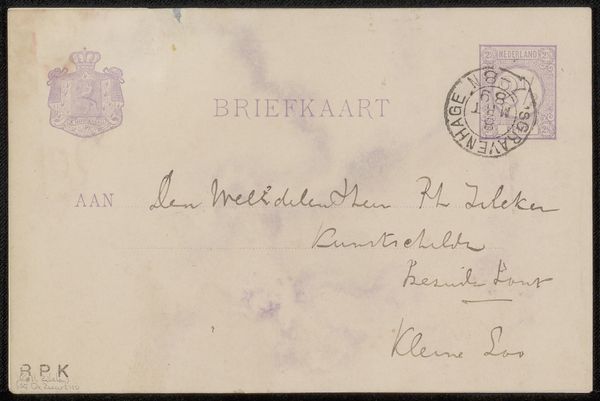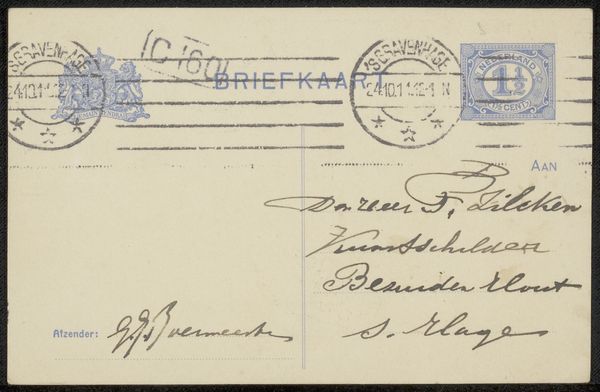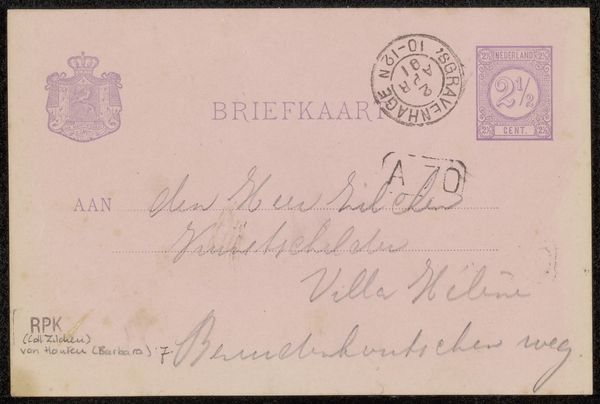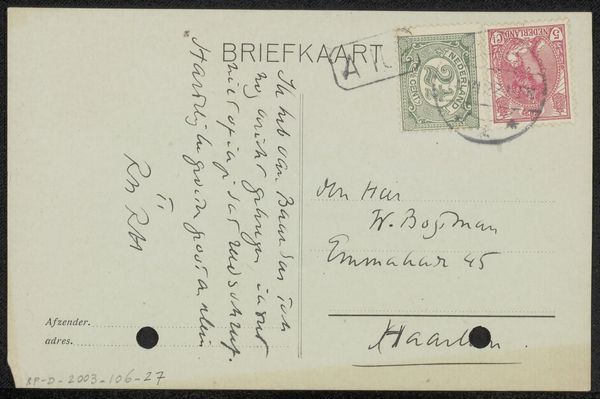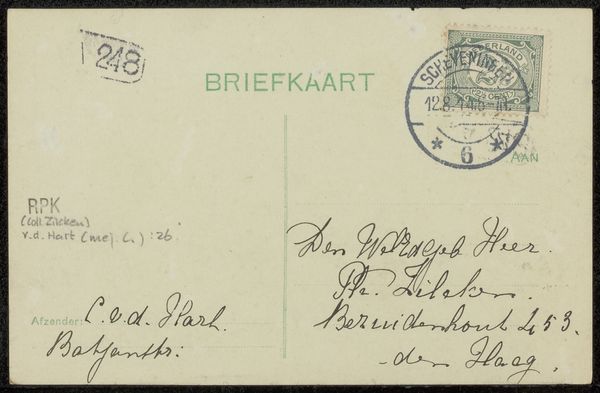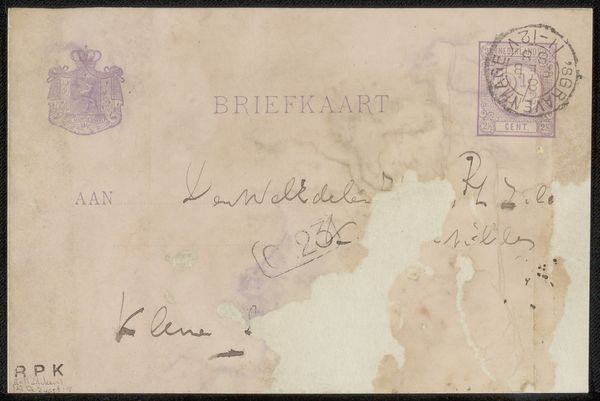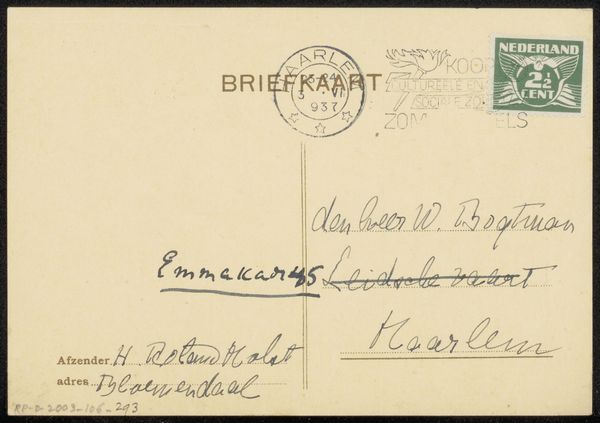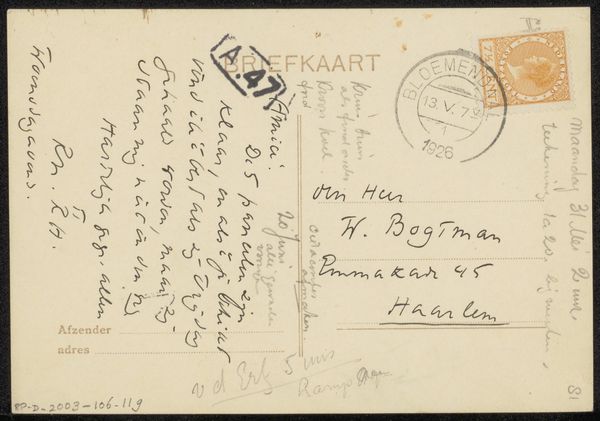
drawing, paper, ink
#
drawing
#
dutch-golden-age
#
paper
#
ink
Copyright: Rijks Museum: Open Domain
Editor: So, this is "Briefkaart aan Philip Zilcken," a postcard to Philip Zilcken, made by Willem de Zwart likely before 1888, using ink on paper. It looks a little worn, doesn’t it? Almost faded in parts. What strikes you about it? Curator: It speaks volumes despite its fragility. A seemingly mundane piece of postal history reveals intricate layers of artistic networks. The very act of sending a postcard becomes a significant gesture, charged with meaning. Editor: Meaning like...? Curator: Consider the visual symbolism: a postal stamp transforms into a marker of temporal space and geographic context. And how the fading ink bleeds into the fibers of the paper: it evokes an element of fragility, both literally and symbolically, of interpersonal relations as recorded and preserved, echoing themes of human connection through artmaking and exhibition. Editor: That’s… really interesting. I was so focused on the surface level. Does the style—the Dutch Golden Age—play into this symbolism, too? Curator: Precisely! This style often invokes nostalgia and echoes a desire for connection to past grandeur and stability, and yet there is a stark reminder that everything decays over time; the damage evident through water staining, for instance. Each small part of this image holds historical and interpersonal weight, adding nuance to its cultural relevance today. Editor: So the postcard acts as a tangible link, not just to an individual, but to an entire artistic legacy and past experiences? Curator: Precisely. And consider, too, how the physical object itself takes on emotional value, an intimate correspondence preserved and imbued with cultural and social context over the decades. It allows us to touch and see history personally. Editor: That gives me a lot to consider when looking at historical correspondence. It's more than just a piece of mail, it seems. Thanks!
Comments
No comments
Be the first to comment and join the conversation on the ultimate creative platform.
